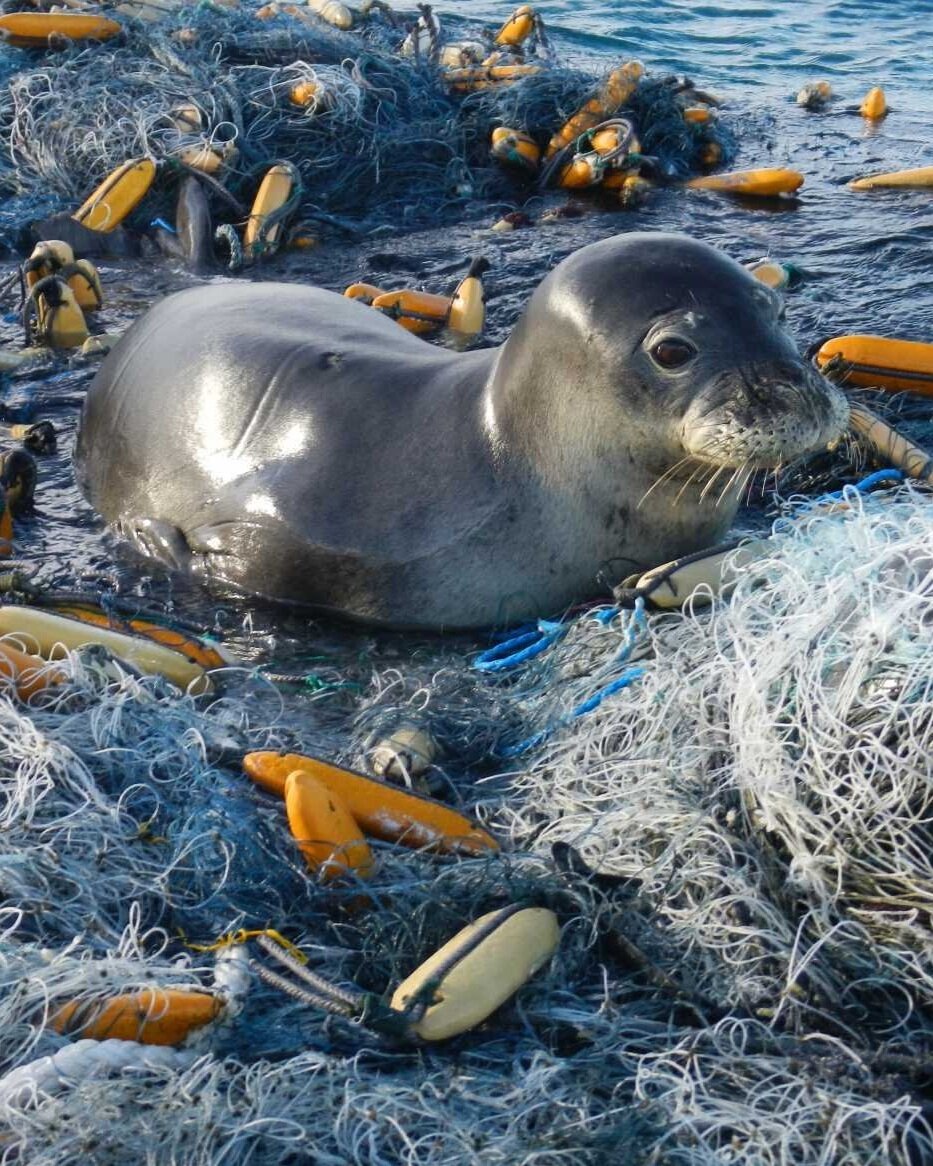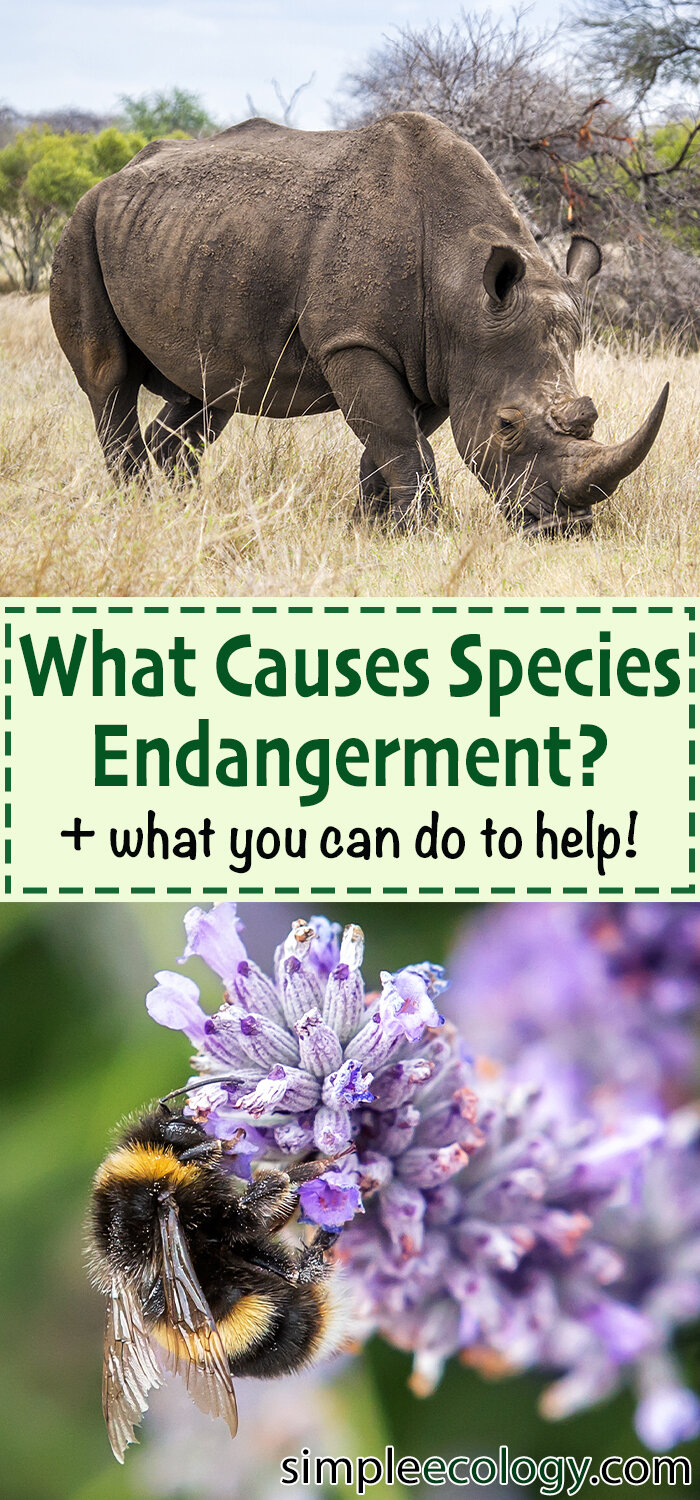What Causes Species Endangerment?
This April marks the 51st anniversary of Earth Day, a day dedicated to the appreciation & conservation of the natural world around us. While we’re so often focused on our own impact on the environment, like lowering our carbon footprint and switching to reusables, we often forget to look at the plants and animals affected by our actions. We wanted to take a closer look at these species that are most negatively impacted by our actions and work on finding ways to help them flourish and thrive.
What are endangered species?
Most of us have heard the term “endangered species” before, whether it be in the environmental field or in the media, but you may still be unclear as to what the term actually means. An Endangered Species is any species of plant, animal, fungi, or invertebrate that is at risk of global extinction in the near future. The term has been used since the 1960’s, with many conservation organizations, government agencies, and international bodies conducting research and creating regulatory practices around these threatened species.
In 1973, the Convention on International Trade in Endangered Species of Wild Fauna and Flora (CITES) was held in Washington, D.C., where members of 80 countries worldwide gathered to create an international regulatory system for the trade of these species. CITES today protects and regulates trade around over 37,000 species, from the sale of live plants & animals to food products, animal products, woods, medicines, and more.
Shortly after CITES, the United States Congress passed the Endangered Species Act, a nation-wide legislative piece that grants federal protection to endangered & threatened species and their habitats. The act also aids in the recovery of species and habitats, providing financial assistance and incentives to states and organizations working to preserve native wildlife.
While lists of endangered species often differ by country and region, the International Union for Conservation of Nature (IUCN) has the most comprehensive index of endangered species globally. The IUCN Red List of Threatened Species currently lists the conservation status of over 134,000 species, with more than 37,400 species being threatened with extinction. It categorizes species of plants and animals into one of seven categories: Extinct (EX), Extinct in the Wild (EW), Critically Endangered (CR), Endangered (EN), Vulnerable (VU), Near Threatened (NT), and Least Concerned (LC). It further lists species whose population and habitat have not been evaluated, Not Evaluated (NE), and those which do not have enough research to accurately categorize, Data Deficient (DD).
What causes species to become endangered?
A seal trapped in discarded fishing lines, photo from The Marine Mammal Center
While it is natural for some species to dwindle and go extinct naturally, think Darwin’s Evolutionary Theory of “survival of the fittest”, the rate of species extinction and endangerment has increased drastically due to human-made causes. The World Wildlife Fund estimates that the current rate of species extinction is 100–1,000 times higher than the naturally occurring rate. So what could be causing these staggering extinction rates and population decreases?
One of the greatest threats to endangered species is Habitat Loss, which is the destruction, degradation, or fragmentation of a species’ native habitat. Habitat destruction is most commonly recognized as deforestation, like the large-scale deforestation of the Amazon Rainforest and other tropical forests around the world, but is also present in the construction developments and agricultural fields. Similar to destruction, habitat degradation occurs when the quality of a region is so low that it can not support it’s own ecosystem, such as environments devastated by wildfires, over-pollution, or the introduction of invasive species. Habitat fragmentation occurs when parts of a habitat are developed or destroyed, leaving small pockets of species isolated from one another. A notable example of this are small patches of wild animals residing in urban parks, such as the lone mountain lion living inside Griffith Park in Los Angeles. Because these isolated animals have so little habitat, they’re at a higher risk of starvation, low genetic variability, and accidental deaths when venturing out of their habitat.
Pollution is a form of habitat degradation that spans further than just some litter being found in nature. A 2016 report from the Ellen MacArthur Foundation estimates that “on the current track, there could be more plastics than fish in the ocean (by weight) by 2050” (The New Plastics Economy). And not only are these plastics floating in the ocean, they’re also breaking down into smaller & smaller fragments called Microplastics. These tiny particles are easily consumed by small fish, which are eaten by larger fish, mammals, birds, and so on. This Bioaccumulation of plastic particles infiltrates the entire food system, even making its way into the seafood that we eat. On top of that, chemical pollution in the form of pesticides, chemical fertilizers, nitrogen oxides, and carbon dioxide contaminate and poison pollinators like bees and butterflies, oceans and rivers, and the even air that we breathe.
Overexploitation and Poaching are two huge contributors to species endangerment, both of which involve the excessive use and destruction of a species. Overexploitation is when a species is utilized in an unsustainable manner, to the point that the natural birth or regrowth rate is less than the rate of use. This is most commonly seen in the current massive overfishing of species like salmon or tuna, or the historic overhunting of bears, wolves, and bison across North America in the 1800s. Similarly, poaching is the illegal hunting, capturing, or killing of wildlife, most of which are under government protection as vulnerable species. Oftentimes these animals are targeted for their pelts, horns or ivory, organs, teeth, bones, and carcasses, which are used for illegal consumption as medicine or simply as a sign of wealth & status.
The current rate of Climate Change has an incredible impact on everything on the planet, from plants and humans to the atmosphere itself. It’s no secret that raising temperatures and melting ice caps have greatly reduced the habitat available for arctic animals such as Polar Bears and Arctic Foxes. This changing climate further adds to the degradation of habitats all around the world by reducing biodiversity, altering seasonal migration patterns, and creating environments prone to wildfires, floods, and cyclones. It also heavily affects the agricultural system, with the World Wildlife Fund reporting how “climate change projections show that food production shocks across sectors are increasing, and are likely to worsen as extreme events such as marine heatwaves and drought become the ‘new normal’ ” (Living Planet Report 2020).
What you can do to help
Though species endangerment may seem like a globally daunting problem, there are still a lot of ways that everyone can make a difference! One of the easiest things that you can do is to educate yourself about an endangered species and the ongoing conservation efforts around them. Reintroduction efforts are a great place to start, these campaigns take a species that was previously endangered or extinct in the wild and place captive-raised members into the native habitat. The reintroduction of Grey Wolves in Yellowstone park in 1995 is still having major ramifications today, with beaver populations and willow tree health on the rise, while benefiting the existing raven, eagle, magpie, coyote, grizzly bear, and black bear populations. Other projects like building wildlife bridges are an ingenuitive way to help decrease habitat fragmentation while also making roads and highways safer for drivers.
Joining and supporting an environmental group is also a considerable step to take. Worldwide organizations like the World Wildlife Fund, National Resource Defence Council, Greenpeace, and Rainforest Action Network support a wide variety of endangered species, threatened habitats, and local communities across the globe. Smaller, specialized organizations and rescue rehabilitation centers are a great way to learn more about specific species, their current threats, and how to fight against these threats. All of these organizations are also fantastic ways to learn about local, state, and federal bills, laws, and propositions, and are a valuable resource for keeping the community up-to-date so you can make an informed vote on these issues!
Finally, you can research the endangered and threatened species local to you. There is always more that you can do to help the local wildlife, so learn about a local species and try to help them out! If you live near the ocean, or even lakes & rivers, find a cleanup effort to remove plastic waste from the waterways that wildlife might ingest. For gardeners, ditch the pesticides and go organic to help local bees and butterflies, or even plant some of their favorite flowers to promote pollination. Live in the city or desert? Visit your local national parks! These parks are incredible nature sanctuaries that help preserve the wildlife, and often offer a lot of great educational material about the native species.








